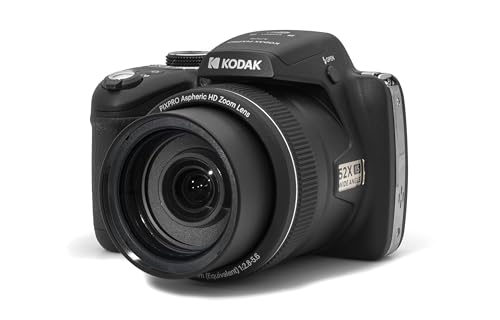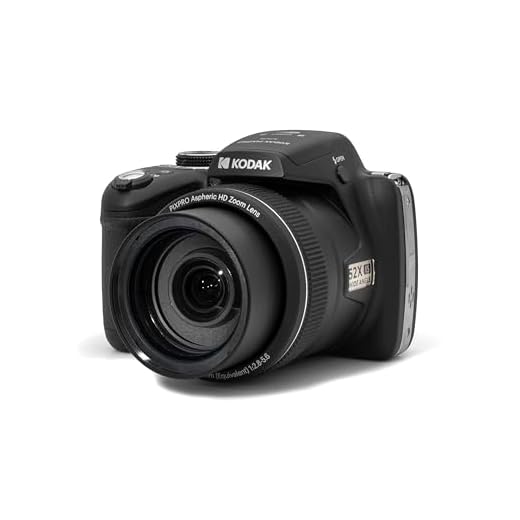




Bridge cameras and DSLR cameras are both popular choices for photographers, but they are not the same. While they may seem similar at first glance, there are key differences between the two that can impact your photography experience.
Bridge cameras are often considered a hybrid between compact cameras and DSLRs. They typically have a fixed lens with a wide zoom range, making them versatile for different shooting situations. On the other hand, DSLR cameras have interchangeable lenses, allowing for more customization and flexibility in capturing images.
When it comes to image quality, DSLR cameras generally outperform bridge cameras due to their larger sensor size and better low-light performance. However, bridge cameras are more compact and easier to carry around, making them a convenient choice for travel photography or casual shooting.
Are Bridge Cameras Different From DSLR Cameras?
Bridge cameras and DSLR cameras have some key differences that set them apart. While both types of cameras offer more advanced features than point-and-shoot cameras, there are distinct characteristics that differentiate bridge cameras from DSLR cameras.
| Bridge Cameras | DSLR Cameras |
| Have a fixed lens that covers a wide zoom range | Interchangeable lenses for versatility in shooting |
| Generally lighter and more compact | Typically larger and heavier due to the mirror and prism system |
| Electronic viewfinder | Optical viewfinder for a direct view through the lens |
| Often have smaller sensors | Usually equipped with larger sensors for better image quality |
| More beginner-friendly with automatic modes | Offer more manual control and customization options |
Despite these differences, both bridge cameras and DSLRs have their own strengths and are suitable for different types of photographers based on their needs and preferences.
Bridge Cameras: Features and Benefits
Bridge cameras are a popular choice for photographers who want something more advanced than a point-and-shoot camera but less bulky than a DSLR. Here are some key features and benefits of bridge cameras:
- Zoom Range: Bridge cameras typically have a large optical zoom range, allowing you to capture distant subjects without compromising image quality.
- Image Quality: These cameras often have larger sensors compared to point-and-shoot cameras, resulting in better image quality and low-light performance.
- Manual Controls: Bridge cameras offer manual control over settings like aperture, shutter speed, and ISO, giving you more creative freedom.
- Electronic Viewfinder: Many bridge cameras come with an electronic viewfinder, making it easier to compose your shots in bright sunlight.
- Compact Design: While not as compact as point-and-shoot cameras, bridge cameras are still smaller and lighter than DSLRs, making them a great option for travel photography.
- Versatility: Bridge cameras are versatile, allowing you to shoot a wide range of subjects from landscapes to wildlife to portraits.
DSLR Cameras: Key Characteristics
DSLR cameras, short for digital single-lens reflex cameras, are known for their high quality and versatility. Here are some key characteristics that set DSLR cameras apart:
1. Interchangeable Lenses
One of the main features of DSLR cameras is the ability to change lenses, allowing photographers to adapt to different shooting situations and achieve various effects.
2. Optical Viewfinder
DSLR cameras use an optical viewfinder that shows exactly what the camera’s lens sees, providing a clear and accurate representation of the scene.
These key characteristics make DSLR cameras a popular choice among professional photographers and enthusiasts who value control and image quality.
Image Quality: Bridge vs DSLR
When it comes to image quality, DSLR cameras generally have the edge over bridge cameras. DSLRs have larger image sensors, which typically results in better image quality, especially in low light conditions. The ability to change lenses on a DSLR also gives photographers more control over the image quality they can achieve.
On the other hand, bridge cameras are designed for convenience and versatility, so they often sacrifice some image quality in favor of a compact, all-in-one design. While bridge cameras can still produce high-quality images, they may not match the level of detail and dynamic range that a DSLR can provide.
In conclusion, if image quality is a top priority for you, a DSLR may be the better choice. However, if you value convenience and versatility, a bridge camera can still deliver impressive results for most casual photographers.
Zoom Capability: Bridge Cameras Explained
Bridge cameras are known for their impressive zoom capabilities, making them a popular choice for photographers who want to capture shots from a distance without the need to switch lenses. These cameras typically feature a powerful zoom lens that covers a wide range of focal lengths, often from wide-angle to telephoto.
One of the main advantages of bridge cameras is their extensive zoom range, which allows photographers to capture detailed shots of faraway subjects. This makes them ideal for wildlife photography, sports events, and other situations where getting close to the subject is not possible.
Bridge cameras usually have a zoom range measured in terms of optical zoom, which refers to the actual physical movement of the lens elements to magnify the image. Some bridge cameras also offer digital zoom, which digitally enlarges the image but can result in a loss of image quality.
| Pros of Bridge Camera Zoom: | Impressive zoom range | No need to switch lenses | Great for distant subjects |
|---|---|---|---|
| Cons of Bridge Camera Zoom: | Potential loss of image quality with digital zoom | Less flexibility compared to interchangeable lens systems |
Overall, the zoom capabilities of bridge cameras make them versatile tools for photographers looking to capture a wide range of subjects from various distances. While they may not offer the same level of image quality and flexibility as DSLR cameras, their convenience and zoom range can make them a valuable addition to any photographer’s kit.
Interchangeable Lenses: DSLR Advantage
One of the key advantages of DSLR cameras over bridge cameras is the ability to interchange lenses. DSLRs allow photographers to choose from a wide range of lenses, including wide-angle, telephoto, macro, and prime lenses, to suit different shooting situations and achieve various creative effects.
This versatility in lens selection gives DSLR users greater flexibility and control over their photography, allowing them to experiment with different perspectives and styles. It also enables photographers to upgrade their lenses as their skills and interests evolve, ensuring that their camera system can grow with them over time.
While bridge cameras offer fixed lenses with versatile zoom ranges, they cannot match the customization and performance potential of interchangeable lens systems found in DSLRs. The ability to swap lenses on a DSLR opens up a world of creative possibilities and ensures that photographers can adapt to any shooting scenario with ease.
Size and Portability: Bridge Cameras vs DSLRs
One of the key differences between bridge cameras and DSLRs is their size and portability. Bridge cameras are typically smaller and more compact than DSLRs, making them easier to carry around and use on the go. This can be a significant advantage for photographers who value convenience and mobility.
On the other hand, DSLRs are generally larger and heavier due to their interchangeable lens system and other advanced features. While this may make them less portable than bridge cameras, it also allows for more versatility and customization in terms of lenses and accessories.
Price Comparison: Bridge Cameras vs DSLRs
When it comes to comparing the prices of bridge cameras and DSLRs, there are several factors to consider. Bridge cameras typically offer a more affordable option for those looking for a versatile camera that bridges the gap between point-and-shoot cameras and DSLRs.
Bridge cameras often come with fixed lenses, which can help keep the overall cost down compared to DSLRs, which require separate lenses to be purchased. This can make bridge cameras a cost-effective choice for beginners or casual photographers.
On the other hand, DSLRs tend to be more expensive upfront due to the need to purchase additional lenses and accessories. However, DSLRs offer greater flexibility and image quality, making them a popular choice for professional photographers or enthusiasts looking to take their photography to the next level.
Usage Scenarios: Bridge Cameras and DSLRs
When it comes to choosing a camera for your photography needs, understanding the usage scenarios for bridge cameras and DSLRs is crucial. Both types of cameras have their own strengths and weaknesses, making them suitable for different situations.
Bridge Cameras:
Travel Photography: Bridge cameras are ideal for travel photography due to their compact size and versatile zoom range. They offer convenience and ease of use, making them perfect for capturing moments on the go.
Beginner Photographers: Bridge cameras are a great choice for beginners looking to improve their photography skills. They provide manual controls and advanced features without the complexity of DSLRs.
DSLRs:
Professional Photography: DSLRs are the go-to choice for professional photographers due to their superior image quality and interchangeable lenses. They offer full control over settings and customization options for creative photography.
Action Photography: DSLRs excel in capturing fast-moving subjects, making them perfect for sports, wildlife, and event photography. Their fast autofocus and burst shooting capabilities ensure you never miss a moment.
FAQ
Are bridge cameras as good as DSLRs?
Bridge cameras offer a good balance between the features of a DSLR and the convenience of a compact camera. While they may not have all the advanced features of a DSLR, they can still produce high-quality images and are a great option for those who want versatility without the complexity of interchangeable lenses.
What are the main differences between bridge cameras and DSLRs?
The main differences between bridge cameras and DSLRs lie in their design and functionality. Bridge cameras have a fixed lens and a smaller sensor compared to DSLRs, which have interchangeable lenses and larger sensors. DSLRs typically offer better image quality, faster autofocus, and more manual controls, but bridge cameras are more compact and easier to use for beginners.
Can bridge cameras take professional-quality photos like DSLRs?
While bridge cameras may not have the same level of image quality and versatility as DSLRs, they can still capture professional-looking photos in the hands of a skilled photographer. With the right lighting and composition techniques, bridge cameras can produce impressive results that are suitable for a wide range of photography needs.
Are bridge cameras a good choice for beginners who want to upgrade from a point-and-shoot?
Bridge cameras are a great choice for beginners who are looking to step up from a basic point-and-shoot camera. They offer more advanced features and controls than compact cameras, making them a good introduction to the world of photography without the complexity of a DSLR. Bridge cameras are versatile and easy to use, making them a good transitional option for those who want to improve their photography skills.









